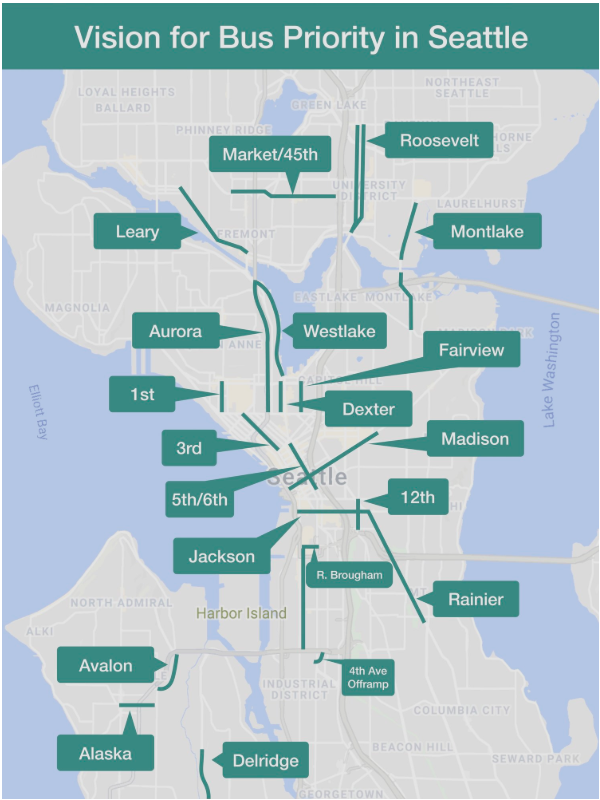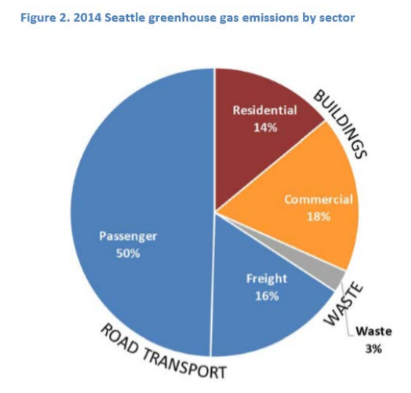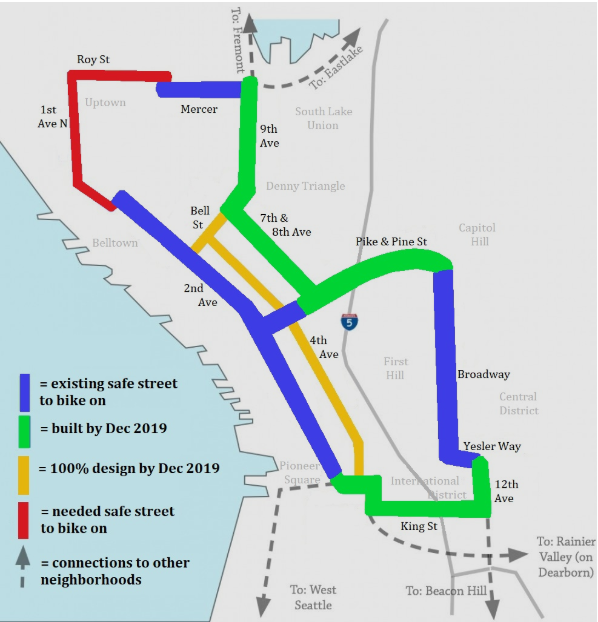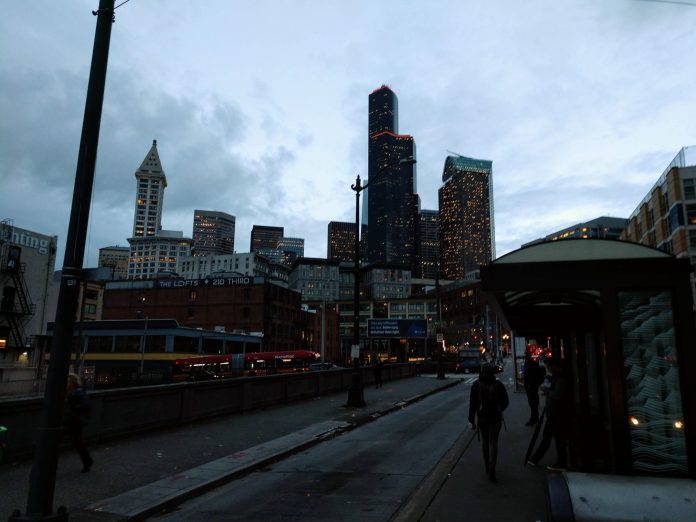In one month, the Alaskan Way Viaduct closes to vehicles as the Washington State Department of Transportation (WSDOT) begins a three week process of connecting SR-99 to its brand spanking new $3.3 billion (and counting) tunnel. Worsening congestion appears inevitable but execution of non-car investment has been lacking, as bike projects, transit projects, and Vision Zero safety projects are delayed.
Today Mayor Jenny Durkan and King County Executive Dow Constantine are holding a 1pm press event at Seacrest Park, which isn’t served by transit at that time of day. They are announcing a new private-public partnership to boost West Seattle shuttle-van-based transit service to get people to the Seacrest Ferry Dock, which is served by the King County Water Taxi on a commuter schedule.
Meanwhile, Move All Seattle Sustainably (MASS) coalition members are charting a path to avoid the worst outcomes as they point out in their press release which is available on their new website. MASS also released a map showing their bus priorities

Katie Wilson, general secretary of the Transit Riders Union, emphasized the urgency needed from City leadership.
“We want to hear a commitment from Mayor Durkan to move forward with these priorities as fast as possible,” Wilson said. “Seattle’s population will continue to climb during and beyond the Seattle Squeeze. We’re never going to escape from this congestion quagmire until we make it far more convenient for people to walk, bike, and ride transit.”
While Mayor Durkan has positioned herself as a climate mayor, MASS members are arguing climate action starts by taking responsibility for Seattle’s number one source of emissions by far: the transportation sector, and working as fast as possible to make it carbon-neutral.

“Seattle voted by a wide margin to fight climate change, despite the nearly $35 million oil industry campaign to defeat I-1631,” said Rebecca Monteleone from the Sierra Club. “Seattle is ready for bold action. Fighting climate change means making it easy for people to get around without driving. We expect Mayor Durkan to lead the fight and so do voters.”
“Seattle voters clearly understand that we must take action to reduce carbon emissions, and transportation is the city’s single largest source of carbon emissions,” said Sarah Shifley from 350 Seattle. “Creating a fast and reliable transit system in our city is the first step toward reducing transportation emissions. Mayor Durkan can make this happen.”
“Here is the thing about emissions; You reduce now or you pay later. And that payment will be in the lives and suffering of hundreds of millions of people,” said Sarah Myhre Ph.D. from Seattle 500 Women Scientists. “Seattle can be a model for cities around the country, but we must start right now.”
Keith Kyle, executive director of Seattle Subway, also mentioned the Mayor’s long-awaited streetcar decision.
“Mayor Durkan needs to demonstrate leadership by prioritizing transit reliability during the period of maximum constraint,” said Kyle. “This is an achievable goal if she extends transit priority on Third Avenue, paints bus lanes ahead of RapidRide implementation, and finalizes the decision to move forward with the Center City Connector Streetcar. Failure by the Mayor’s office to act now will result in an overwhelming majority of downtown commuters stuck in traffic without access to reliable alternatives.”
Even without fancier RapidRide and streetcar upgrades, simply adding bus lanes on our busiest routes is a low hanging fruit that could provide a big lift.
“Bus lanes are the only way to keep transit moving when the rest of the system fails,” said Martin Duke from Seattle Transit Blog. “What we’re proposing for 2019 would be a first step towards a more comprehensive network of bus lanes for Seattle.”
Street geometry and safety is another reason to shift away from just moving more cars faster.
“Seattle is running out of space. Every person biking, walking, or using transit is a person not taking a car,” said Richard Smith, Executive Director of Cascade Bicycle Club. “To lead our city through the challenge at hand, it’s going to take prioritization. It starts with building the approved and funded Basic Bike Network following the timeline laid out by City Council.”

“8% of people are already walking downtown, and more will do so if we make it comfortable and convenient,” said Clara Cantor from Seattle Neighborhood Greenways. “The City needs to adopt stronger rules on sidewalk closures so that people are not forced to walk in dangerous streets next to speeding cars or resort to unsafe measures. And we need a new policy on pedestrian signals that make it easier to cross the street.”
You can read more from the coalition on the MASS website, follow them on Twitter at @MASScoalition, or follow the great organizations that make up the coalition.
Editor’s Note: The Urbanist is part of the MASS coalition.

Owen Pickford
Owen is a solutions engineer for a software company. He has an amateur interest in urban policy, focusing on housing. His primary mode is a bicycle but isn't ashamed of riding down the hill and taking the bus back up. Feel free to tweet at him: @pickovven.

